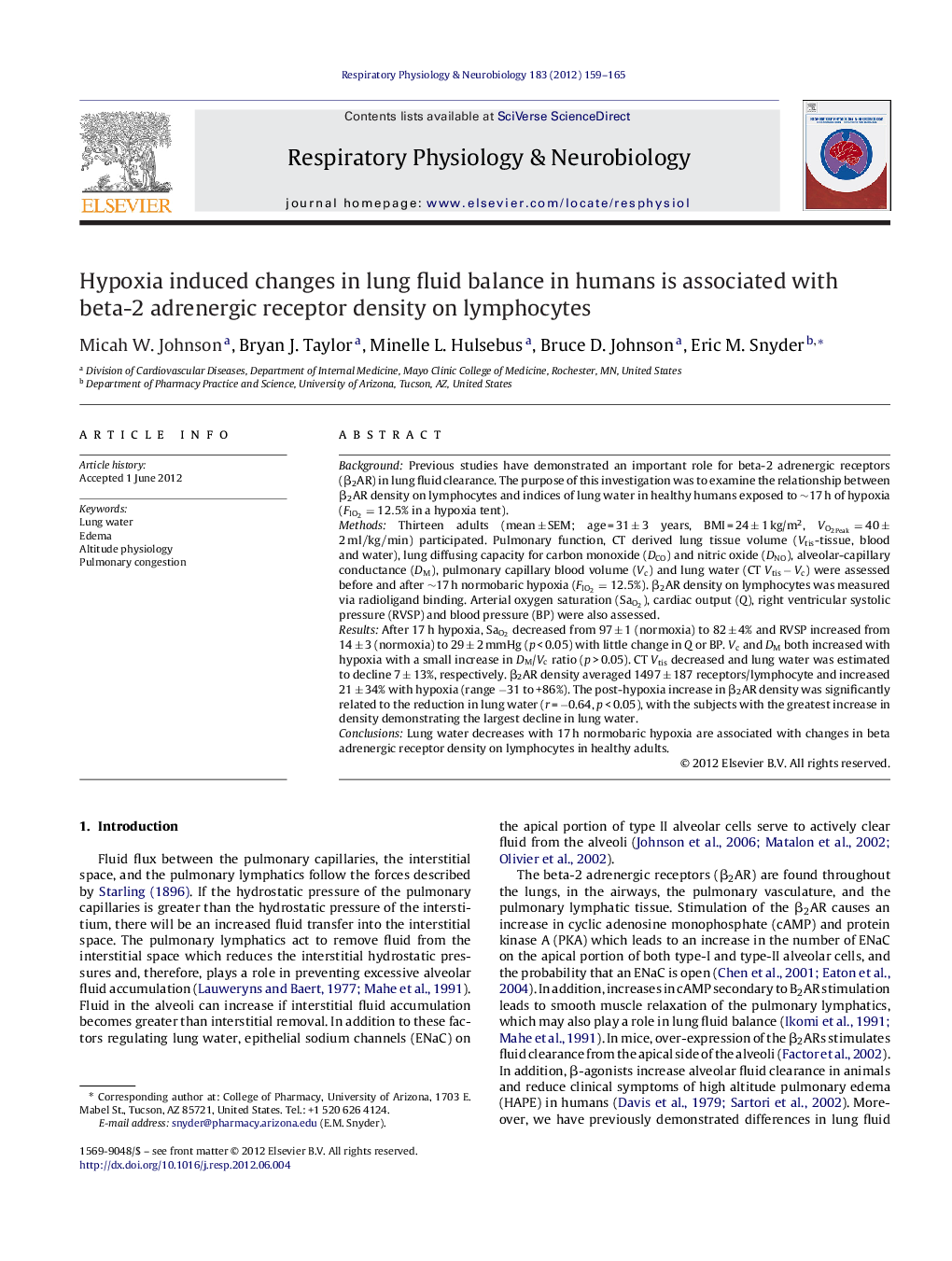| Article ID | Journal | Published Year | Pages | File Type |
|---|---|---|---|---|
| 2847253 | Respiratory Physiology & Neurobiology | 2012 | 7 Pages |
BackgroundPrevious studies have demonstrated an important role for beta-2 adrenergic receptors (β2AR) in lung fluid clearance. The purpose of this investigation was to examine the relationship between β2AR density on lymphocytes and indices of lung water in healthy humans exposed to ∼17 h of hypoxia (FIO2=12.5%FIO2=12.5% in a hypoxia tent).MethodsThirteen adults (mean ± SEM; age = 31 ± 3 years, BMI = 24 ± 1 kg/m2, VO2 Peak=40±2 ml/kg/minVO2 Peak=40±2 ml/kg/min) participated. Pulmonary function, CT derived lung tissue volume (Vtis-tissue, blood and water), lung diffusing capacity for carbon monoxide (DCO) and nitric oxide (DNO), alveolar-capillary conductance (DM), pulmonary capillary blood volume (Vc) and lung water (CT Vtis − Vc) were assessed before and after ∼17 h normobaric hypoxia (FIO2=12.5%FIO2=12.5%). β2AR density on lymphocytes was measured via radioligand binding. Arterial oxygen saturation (SaO2SaO2), cardiac output (Q), right ventricular systolic pressure (RVSP) and blood pressure (BP) were also assessed.ResultsAfter 17 h hypoxia, SaO2SaO2 decreased from 97 ± 1 (normoxia) to 82 ± 4% and RVSP increased from 14 ± 3 (normoxia) to 29 ± 2 mmHg (p < 0.05) with little change in Q or BP. Vc and DM both increased with hypoxia with a small increase in DM/Vc ratio (p > 0.05). CT Vtis decreased and lung water was estimated to decline 7 ± 13%, respectively. β2AR density averaged 1497 ± 187 receptors/lymphocyte and increased 21 ± 34% with hypoxia (range −31 to +86%). The post-hypoxia increase in β2AR density was significantly related to the reduction in lung water (r = −0.64, p < 0.05), with the subjects with the greatest increase in density demonstrating the largest decline in lung water.ConclusionsLung water decreases with 17 h normobaric hypoxia are associated with changes in beta adrenergic receptor density on lymphocytes in healthy adults.
► We explored the influence of hypoxia on lung fluid changes and how these changes were related to changes in beta-2 adrenergic receptor density. ► We found a reduction in lung water (using CT scanning) and an improvement in lung diffusion. ► We found that these changes in indices of lung water were related to changes in beta-adrenergic receptor density.
